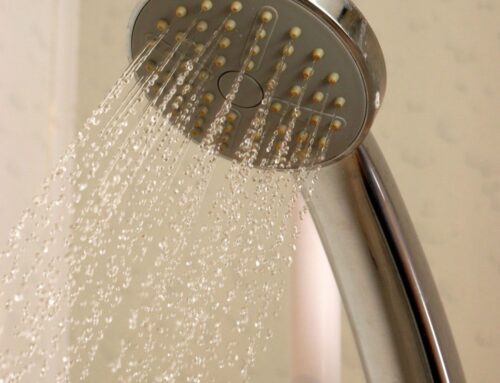If there’s one fact homeowners should know about concrete, it’s that concrete will crack. Natural movement, expansion and contraction due to changes in weather, and landscaping can cause concrete to crack. Depending on the size of the crack, you may be able to avoid the costly replacement of concrete slabs by repairing cracks yourself (to avoid larger concrete cracks that require a professional or full replacement, repair cracks as soon as you notice them). Below are the steps Better Homes & Gardens and others suggest for repairing cracks in exterior concrete surfaces.
Step 1: Clean the Concrete Surface
As with most home repairs, it is best to start with a clean surface when repairing concrete. A pressure washer is the best tool to use for this. Start by hosing down the surface. Next, use a masonry cleaning solution that includes strong degreasing agents or agents that get rid of plant stain and mold. If you have a power washer, add it to cleaning reservoir and spray it thoroughly on the concrete surface using a low-pressure nozzle. Finally, thoroughly rinse the cleaning solution off the concrete. Use a high-pressure nozzle on your power washer. Pay attention to debris in cracks and any dirt spots, and make sure you remove all debris and dirt. While cleaning, remove any loose concrete you find.
Step 2: Repair Concrete with Concrete Caulk or Concrete Mix
If the crack is still smaller, you can use a waterproof concrete crack to fill it in. If the crack is larger, you will need to purchase bagged concrete and mix it as instructed on the package. Sand mix or concrete resurfacer, which do not contain gravel, may be used if the area to be repaired is not large or deep. A standard concrete mix that contains gravel works best for patching large or deep areas. If using concrete mix, pour the mixed concrete in the cracks and damaged areas. Then, use a flat edged trowel to work the mix into the cracks and fully fill them. Once all cracks and damaged areas have been filled, use the trowel to smooth the surface and remove any excess concrete mix.
Step 3: Give Concrete Time to Dry
After your hard work, it’s now time to take a break. Allow the concrete to completely dry (usually overnight or a full day).
Step 4: Use a Resurfacer
Once the concrete is dry, apply a thin coat of a resurfacing concrete over the entire concrete area (not just repaired areas). Before applying, make sure no leaves or debris have blown onto the concrete. If there is anything, sweep it away. Next, wet the surface to help ensure the concrete doesn’t dry too fast and you have time to properly apply the resurfacer. Mix the resurfacer, which will be much thinner than concrete mix (think consistency of pancake batter). Pour the resurfacer on the concrete, then use a rubber squeegee to spread it. Work in small areas to help get an even coat that doesn’t have lap marks.
Step 5: Add Texture
When the concrete begins to set, use a broom with an extendable handle to add texture to the surface. This prevents the concrete from becoming slippery when wet.
Step 6: Allow Concrete to Fully Dry
Allow at least six hours of drying time before you walk on it. For driveways, allow at least 24 hours of drying before driving on the resurfaced concrete.
Preventing Concrete Cracks
While it is true that all concrete will crack at some point, there are preventive measures you can take to reduce cracking:
- When cleaning, use a broom, not water. If washing is necessary, make sure the temperatures are moderate. Cold water on hot concrete can expedite cracking.
- Avoid driving large vehicles, like motor homes, moving vans, commercial vehicles, and deliver vehicles, on concrete.
- Remove snow and ice from concrete as soon as possible. Also, avoid using salt or ice melt, which can accelerate damage to concrete.
- Protect concrete from chemical agents, such as pet urine, fertilizers, and radiator overflow, which can cause chipping and cracks.
- Seal concrete regularly. Sealers only last up to five years, so you’ll need to reapply regularly. See your product’s recommendations for specific timing.
- Pay attention to your landscaping, including avoiding planting trees near concrete. Roots from trees can cause concrete to crack or buckle. Also be sure to direct drainage away from concrete. If excess water gets under concrete, it can crack or sink.
Looking for your dream home? Liberty Homes has been building new homes in Utah for nearly 30 years. We take pride in our trade, crafting each home as if it were our own. Our quality, affordable homes are energy smart and thoughtfully personalized for your active Utah lifestyle. We currently have townhomes available in Salt Lake County. Future releases coming in West Jordan and Heber city. Contact us today to get started building your new home.

Want home decorating and maintenance tips, craft ideas, recipes, and more delivered right to your inbox?
Sign up for our monthly newsletter:




